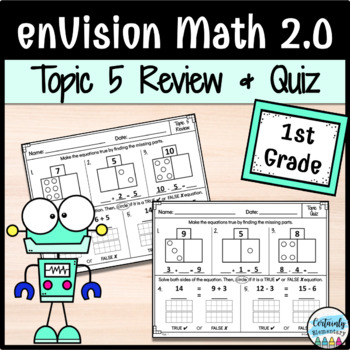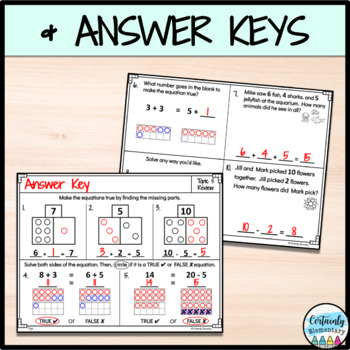enVision Math 2.0 | 1st Grade Topic 5: Review and Quiz
- PDF
What educators are saying
Also included in
- This BUNDLE includes Math Reviews and Quizzes for ALL 15 TOPICS based on the enVision Math 2.0 (2020) series. I am ALWAYS looking for ways to encourage student independence, especially during a review or quiz. This resource was designed to be straightforward and engaging for students to work on indePrice $20.00Original Price $28.00Save $8.00
Description
I am ALWAYS looking for ways to encourage student independence, especially during a review or quiz. This resource was designed to be straightforward and engaging for students to work on independently.
What skills are being practiced?
- Working with Addition and Subtraction Equations
- Find Unknown Numbers
- True or False Equations
- Make True Equations
- Add Three Numbers
- Word Problems with Three Addends
- Solve Addition and Subtraction Word Problems
What's Included?
- Topic 5 Review (2 pages)
- Topic 5 Quiz (2 pages)
- Answer Keys
How can I use this resource in my classroom?
These pages can be used as a Math Review, Math Quiz, Study Guide, Independent Practice, Intervention, Homework, or as a Summer School Review.
These worksheets are ready to print & go! Print the review/ quiz as a double-sided worksheet OR staple the pages together if you prefer.
Click here to get the Topic 1 Review & Quiz for FREE → Topic 1: Review and Quiz
**************************************************************************************************************
This resource aligns well with Topic 5: Work with Addition and Subtraction Equations from enVisionMath®, Version 2.0 (2020) as it covers the skills taught from this topic. However, this resource is an independent product and it is not affiliated with enVisionMath®, Savvas®, or Savvas Learning Company®.






